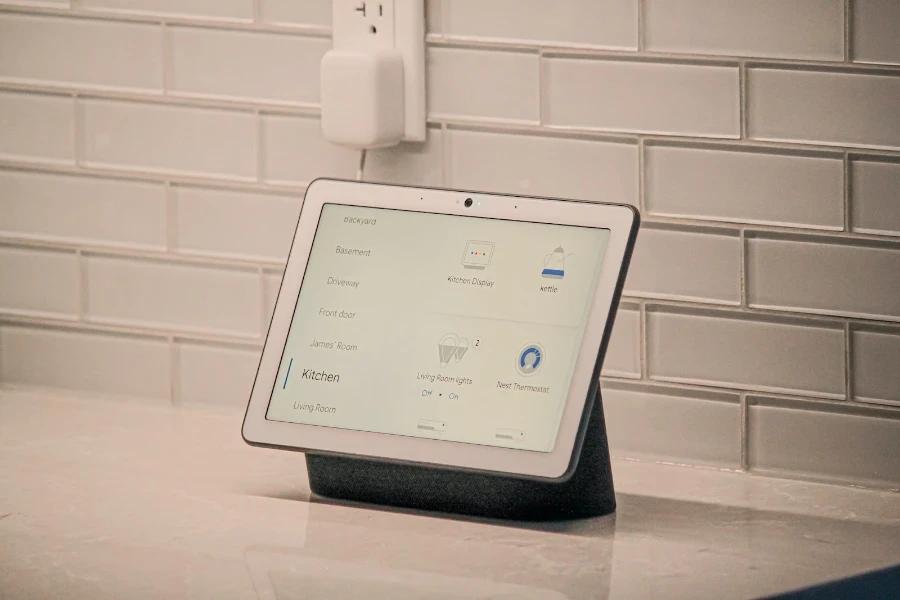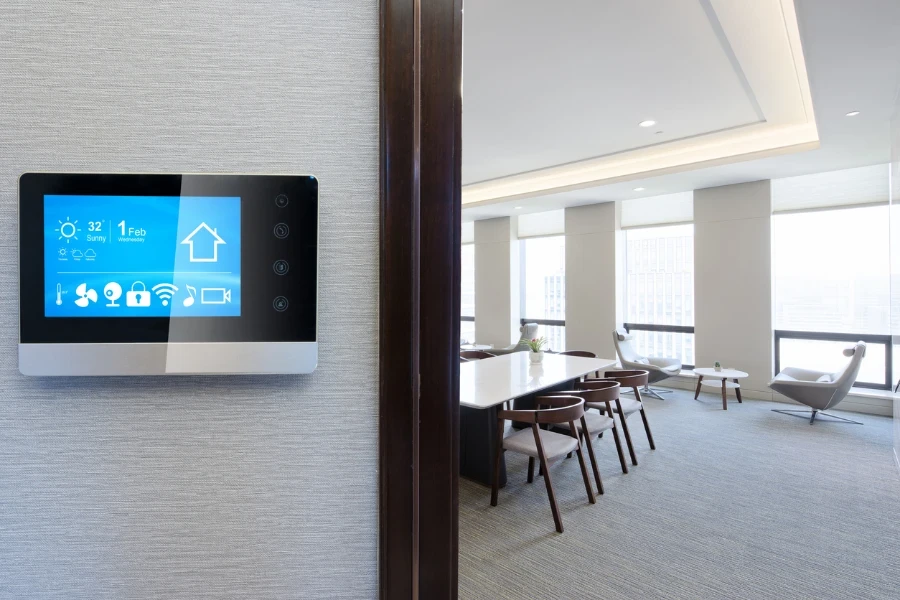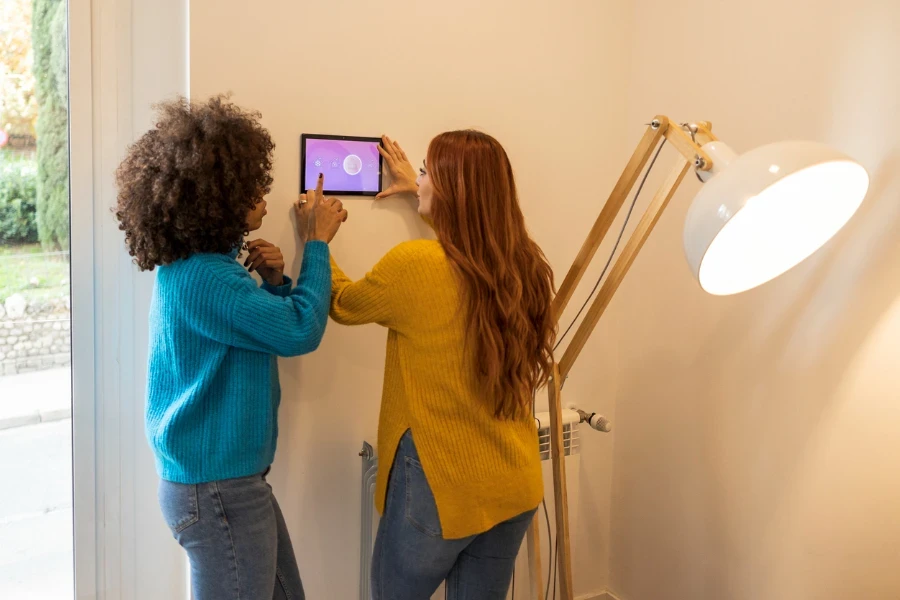In a world where environmental consciousness and energy efficiency take center stage, the significance of embracing smart technology for conserving energy cannot be overstated. As businesses venture into offering innovative solutions, smart thermostats emerge as game-changers, providing a pivotal link between comfort and sustainability.
Here we delve into the crucial interplay between energy efficiency and smart technology. We’ll explore how these intelligent devices are poised to transform how we approach temperature control, offering cost savings and significantly reducing our carbon footprint.
Uncover the profound impact that smart thermostats can have on reshaping our approach to energy conservation in the modern world.
Table of Contents
Understanding smart thermostats
Exploring home automation systems
The synergy of smart thermostats and home automation
Choosing the right smart thermostat
Setting up smart thermostats and home automation
Potential challenges and limitations
Conclusion
Understanding smart thermostats
Smart thermostats are advanced heating and cooling control devices that use modern technology to enhance the management of your home’s temperature. They connect to a home’s Wi-Fi network and can be controlled remotely through smartphones, tablets, or other smart devices.
Additionally, they often incorporate artificial intelligence and data analysis to learn preferences and create energy-efficient temperature schedules automatically.
Differences between smart thermostats and traditional thermostats:
- Remote control: One of the primary differences is the ability to control smart thermostats remotely. Traditional thermostats require manual adjustments on-site, while smart thermostats allow you to change settings via smartphone apps or voice commands from anywhere with an internet connection.
- Learning capabilities: Smart thermostats can learn habits and preferences over time. They adapt to your schedule, adjusting temperatures to save energy when you’re away and ensuring comfort when you’re home.
- Energy efficiency: Smart thermostats are designed to maximize energy efficiency. They may employ geofencing (adjusting temperatures based on your location), learning algorithms, and real-time weather updates to optimize heating and cooling, resulting in potential energy savings.
- Scheduling and automation: While some traditional thermostats have basic scheduling options, smart thermostats offer more advanced automation. You can set up custom schedules or allow the thermostat to create schedules based on your behavior and preferences.
- Integration with home automation: Smart thermostats can be integrated into broader home automation systems, allowing them to communicate and coordinate with other smart devices like lights, blinds, and security systems. This integration enhances overall energy efficiency and convenience.
Exploring home automation systems

Home automation refers to using technology to control and manage various household tasks, systems, and devices in an automated or remotely controlled manner. The primary purpose of home automation is to enhance convenience, comfort, security, and energy efficiency within a household. Integrating smart devices, sensors, and systems creates a more streamlined and interconnected living environment.
Home automation covers many applications, including lighting control, temperature regulation, security systems, entertainment systems, and more. By automating routine tasks and allowing devices to communicate with each other, home automation simplifies daily life and provides greater control over the living environment.
Advantages of integrating home automation with energy efficiency:
- Optimized energy consumption: Home automation systems can intelligently control devices like thermostats, lights, and appliances based on occupancy, time of day, and user preferences. This dynamic control leads to efficient energy use, reducing wastage and lowering utility bills.
- Scheduling and automation: Automated schedules can be set up for various devices, ensuring they turn on or off at specific times, which prevents devices from running unnecessarily, reducing energy consumption.
- Real-time monitoring: Home automation platforms often provide real-time data on energy usage. This information empowers homeowners to identify energy-hungry devices and adjust their habits to conserve energy.
- Demand response: Some home automation systems can participate in demand response programs. During peak energy usage times, the system can automatically adjust energy-intensive devices to ease the strain on the grid.
- Geofencing: Geofencing technology allows devices to detect when residents are approaching or leaving home, which triggers pre-defined actions, such as adjusting the thermostat, turning off lights, or activating security systems, helping to reduce energy waste.
- Remote control: With remote smartphone access, homeowners can control devices even when away from home. Forgot to turn off the lights or adjust the thermostat before leaving? You can do so remotely, preventing unnecessary energy use.
- Long-term environmental impact: By promoting energy-efficient behaviors and optimizing energy consumption, home automation reduces carbon emissions and minimizes the household’s environmental footprint.
Integrating home automation with energy efficiency is a logical step toward creating a more sustainable and comfortable living environment. The synergy between the two concepts empowers homeowners to make smarter choices, conserve resources, and enjoy the benefits of a technologically advanced and eco-friendly home.
The synergy of smart thermostats and home automation
Integrating a smart thermostat with home automation enables more comprehensive control over heating and cooling. The system can adjust temperature settings based on occupancy and external factors, further increasing energy savings.
Choosing the right smart thermostat

Choosing the right smart thermostat and home automation setup involves careful consideration of your needs, compatibility with existing systems, features, and long-term goals. Here’s a guide to help you make informed decisions:
Assess needs
Firstly, it’s essential to assess needs and priorities. Identify whether you’re seeking energy savings, enhanced convenience, improved security, or a combination of these benefits. Additionally, consider the size and layout of your home, as larger homes require more sensors and devices for comprehensive automation. Setting a budget is crucial, as the market offers a range of options at various price points.
Businesses selling smart thermostats should consider if they want to sell products that meet all these needs or focus on a specific niche.
Compatibility
Compatibility is a critical factor in avoiding compatibility issues. Ensure that any smart thermostat you’re considering is compatible with consumers’ current heating, ventilation, and air conditioning (HVAC) systems. If consumers already have other smart devices, such as smart lights or locks, ensure the new system seamlessly integrates with the existing setup.
Features to look for
There are some additional features that consumers may want to consider based on their specific needs regarding home automation and smart thermostats.
- Remote control: Remote control capability is fundamental, enabling management of settings remotely.
- Learning capabilities: Opt for a thermostat that learns habits and adjusts settings accordingly.
- Scheduling: Customizable scheduling options allow consumers to automate temperature adjustments and device settings based on routine.
- Sensors: Some thermostats have remote sensors for temperature optimization in different rooms.
- Voice control: Consider compatibility with voice assistants like Alexa or Google Assistant for convenient hands-free control.
- Geofencing: Geofencing, a technology that adjusts settings based on location, enhances automation by responding to a person’s movements.
- Energy reports: Some systems provide detailed energy consumption reports for better insights.
Home automation platforms
Consumers often seek smart devices that seamlessly integrate into their existing ecosystems. Ensure that your smart thermostat and home automation system aligns with popular platforms like Amazon Alexa, Google Assistant, and Apple HomeKit. These platforms provide diverse integration options, allowing consumers to effortlessly incorporate your smart thermostats into their preferred ecosystem.
Furthermore, some smart systems may require a central hub for effective device connectivity and control. It’s wise to verify whether the devices you offer and the desired automation features necessitate such a hub. This information empowers your consumers with a comprehensive understanding of the setup requirements, enabling them to make informed decisions that suit their needs.
By addressing compatibility concerns proactively, you establish your smart thermostats as a seamless and valuable addition to their existing smart home setup.
Support and updates
Your system’s durability and continued performance are influenced by the support and updates you provide. Opt for a brand that prioritizes consistent firmware updates, as these updates bolster functionality and enhance security as technology evolves.
Equally essential is reliable customer support. This becomes invaluable when consumers face challenges or inquiries during their usage journey. Offering responsive and effective customer support reflects your commitment to ensuring a smooth customer experience and instilling trust in your brand and product. By highlighting the significance of ongoing support and updates, you position your smart thermostats as a dependable and future-ready choice for consumers.
Long-term considerations
Select a system that accommodates potential additions without limitations. Future compatibility with evolving technologies is essential to ensure devices remain relevant over time.
Energy efficiency certifications
Lastly, keep an eye out for energy efficiency certifications. Some smart thermostats carry these certifications, indicating their commitment to reducing energy consumption and environmental impact.
Remember that choosing a smart thermostat and home automation setup should align with the consumers’ preferences, lifestyle, and goals. Taking the time to research and make an informed decision will lead to a more effective and satisfying home automation experience.
Setting up smart thermostats and home automation

Setting up smart thermostats can be an exciting yet sometimes intricate process. To guide your customers through a seamless setup, here’s a comprehensive step-by-step guide:
1. Review the user manual & prepare tools and equipment
Encourage customers to read the user manuals of their smart thermostats and home automation devices thoroughly. Manuals often contain critical setup instructions and safety information.
Ensure customers have all necessary tools, such as screwdrivers, pliers, level, and wiring essentials (wire stripers, electrical tape, voltage tester, C-wire adapter) ready for installation. Always make sure to turn off the breaker before touching any wiring.
2. Check compatibility
Remind customers to verify compatibility with their HVAC systems and existing smart home ecosystem, including Wi-Fi networks and hubs.
3. Install smart thermostats & connect to Wi-FI
Explain the installation process step by step. This usually involves shutting off power, removing the old thermostat, wiring the new thermostat following provided instructions, and attaching it to the wall.
Guide customers through connecting their smart thermostats to their home Wi-Fi network. This usually requires them to use the device’s companion app.
4. Configure settings
Assist customers in configuring basic settings such as time, date, and temperature preferences using the thermostat’s interface or app.
5. Explore automation features & set up scenes and routines
Walk customers through enabling automation features like scheduling and learning algorithms. Explain how these features enhance comfort and energy efficiency. Teach customers how to create customized scenes or routines that trigger multiple actions simultaneously, like turning off lights and adjusting thermostat settings when leaving the house.
Provide tips on optimizing automation routines and thermostat settings to maximize energy savings while maintaining comfort, such as adjusting temperatures while away from home, adjusting the temperature based on weather or time of year, etc.
6. Test, troubleshoot & offer ongoing support
Encourage customers to test each device and automation scenario to ensure everything functions as intended. Address any initial issues promptly.
Inform customers about available customer support channels should they encounter any issues during or after setup.
7. Enjoy the benefits
Conclude by highlighting the enhanced comfort, convenience, and energy efficiency that smart thermostats and home automation systems bring to their daily lives.
By offering a detailed, step-by-step guide, you empower your customers to confidently set up their smart thermostats and home automation systems, ensuring a smooth and enjoyable transition to a more connected and efficient home environment. Also, don’t forget to remind customers about the importance of setting strong passwords and enabling security features to protect their devices and data.
Potential challenges and limitations
When delving into smart thermostats, businesses must acknowledge and address potential challenges and limitations that consumers might encounter. By providing transparency and solutions, you can enhance the overall customer experience. Here are some factors to consider:
Internet connectivity and reliability concerns
As smart thermostats rely on internet connectivity to function optimally, interruptions in internet service can affect their performance. Businesses need to communicate this dependency clearly. Additionally, network connectivity issues might lead to delays or inaccuracies in remote control and monitoring.
Providing guidance on optimizing home Wi-Fi networks and educating consumers about potential connectivity challenges can empower them to mitigate such issues.
Compatibility issues with older home systems
Older homes might have outdated HVAC systems or wiring that’s incompatible with certain smart thermostats. These compatibility issues can limit the functionality and benefits of the device.
By providing compatibility guides and offering a range of thermostats suitable for different home setups, businesses can help consumers make informed choices. Alternatively, exploring options for retrofitting or upgrading older systems can expand the potential customer base.
Data privacy and security considerations
Smart thermostats collect and process user data, raising privacy and security concerns. Consumers are rightfully concerned about the potential exposure of their personal information. Businesses should prioritize robust data encryption and implement strict security measures to safeguard user data.
Being transparent about data collection practices, allowing users to control their data, and complying with privacy regulations can foster trust and reassure consumers about their data’s security.
Learning curve and user experience
Smart thermostats offer advanced features that might require some learning for users unfamiliar with such technology. A complex user interface or challenging setup process can discourage adoption. Providing user-friendly guides, video tutorials, and responsive customer support can help users navigate the learning curve smoothly, enhancing their overall experience.
Conclusion

As businesses seek to provide innovative solutions that align with the growing demand for energy efficiency, smart thermostats emerge as a beacon of hope.
These intelligent devices bridge the gap between modern comfort and responsible conservation, offering a practical means to reduce energy consumption without compromising the quality of life. The journey towards a more sustainable future begins with choices, and adopting smart thermostats is a powerful step in the right direction.
By incorporating these technologies into your offerings, you’re providing customers with tools to enhance their lives and contributing to a world that values efficiency and stewardship.
As smart technology continues to evolve, the possibilities for revolutionizing energy conservation are limitless. Let’s embrace this future together and create a world where comfort, innovation, and sustainability coexist harmoniously.



